Building Custom Carriage-House Doors
Sandwich-style construction offers strength and design flexibility without fussy joinery work, and is good for all sorts of doors—not just garage doors.
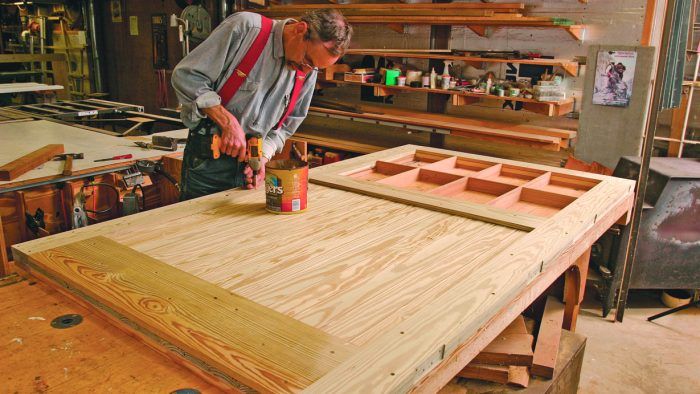
Synopsis: This article details the construction of a pair of swinging doors for a small garage, but the technique used could be applied to other projects. Building a door in layers gives the look of traditional mortise-and-tenon joinery with less fuss. The key tool used is a pocket-hole jig. The upper halves of the doors have divided lites; the lower halves are frame and panel, with V-groove vertical boards making up the panels.
I love the look of custom-built doors. Building a door from scratch allows you to decide on the proportions, details, materials, and finishes that you want. Do the job right, and the end result will far exceed what you can buy off the shelf. My door-making technique can be adapted for doors of just about any size, but it’s best for thicker doors, like the garage doors shown here. Strength and stability are important when you go beyond standard door sizes, and the layered construction of my doors makes them strong, stable, and heavy. Plan to hang these doors with heavy-duty hinges. I recommend four hinges on a large door instead of three.
Because of the layered construction, I describe my doors as “sandwich doors.” Building a door in layers gives the look of traditional joinery (stiles and rails that meet with mortise-and-tenon joints) with less of the fuss. The key tool for this technique is the pocket-hole jig, which allows you to join two pieces of wood quickly.
Overlapping Layers Create Strong Joints
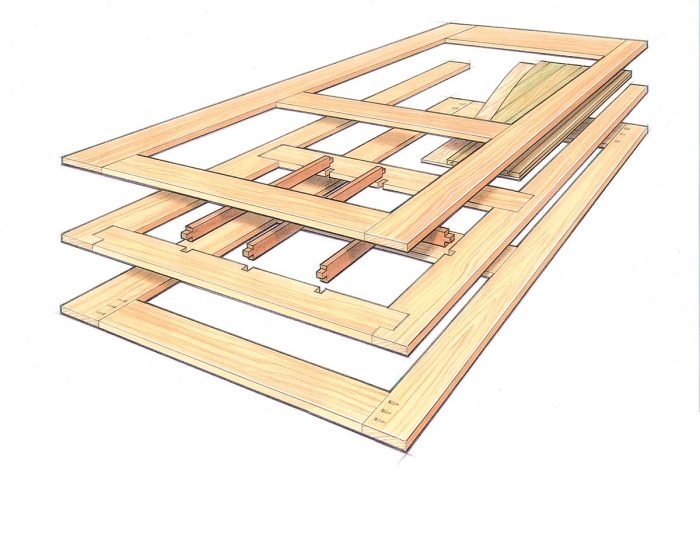 |
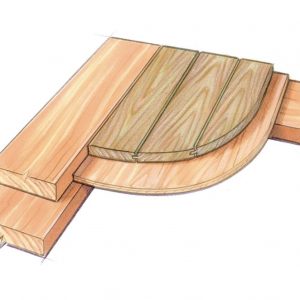 |
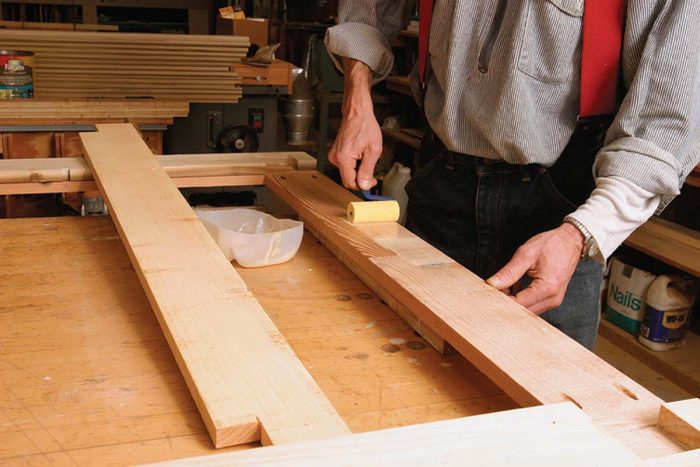 |
Notched connections in the middle layer turn into mortise-and-tenon joints when outer layers are glued in place. A foam roller speeds glue application. |
Plywood, Paneling, And Glass
Cutting the middle frame members narrower than the outer frame members creates a rabbet or step where a 1⁄4-in. lauan-plywood panel can fit. The author fills the lower section of the door with tongue-and-groove “beadboard” paneling. Window muntins and the exterior stile-and-rail assembly are installed next.
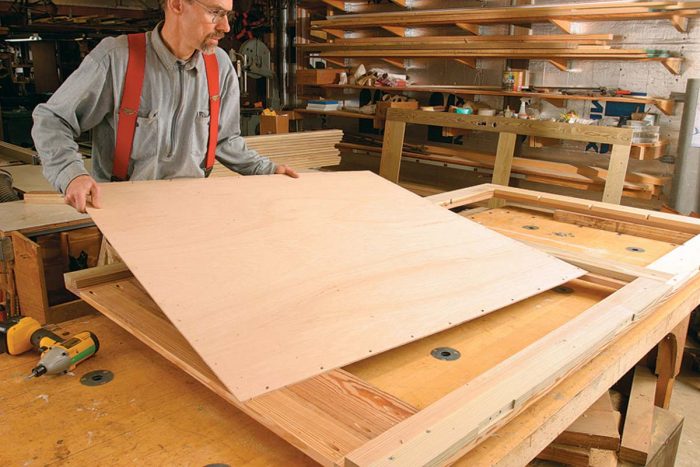 |
 |
“I Wouldn’t Consider Building A Door Any Other Way”
This endorsement comes from Andy Engel, a former Fine Homebuilding editor who now works as a building and remodeling contractor. Like Scott McBride, Engel used sandwich-style construction to duplicate the strength and appearance of a traditional mortise-and-tenon door. This Craftsman-style door graces the entryway of the house that Engel built several years ago in northwestern Connecticut.
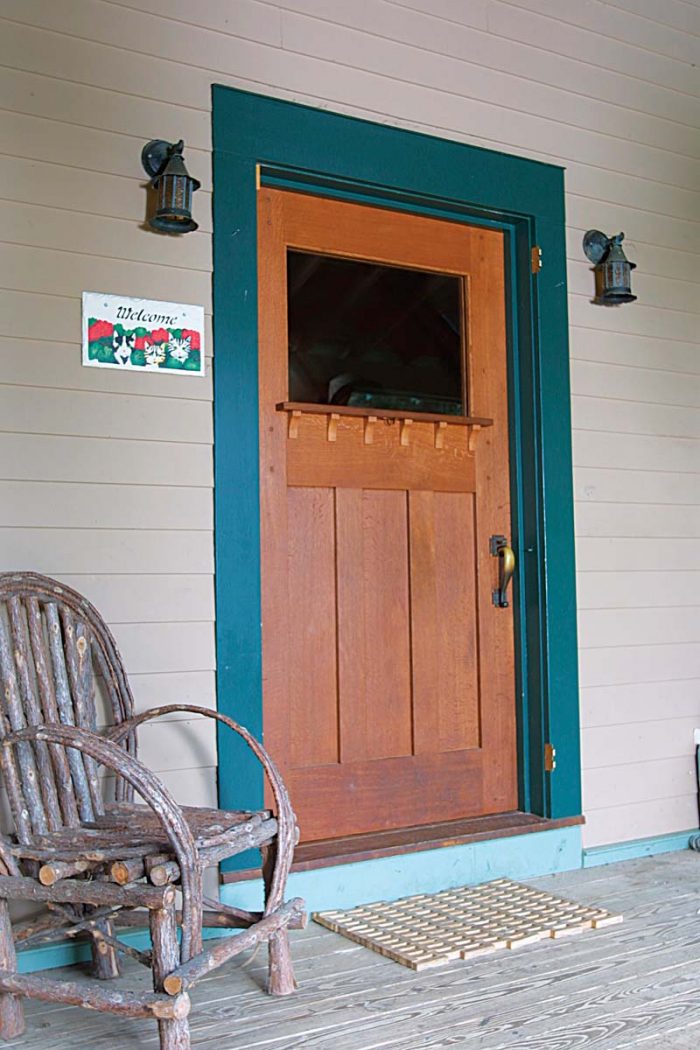 |
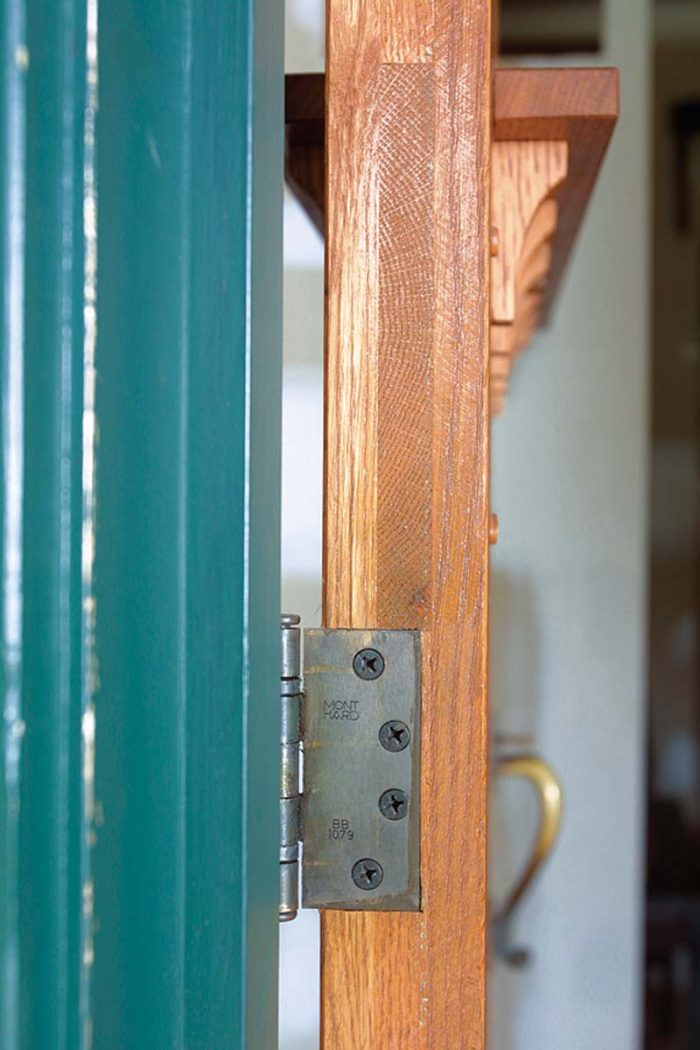 |
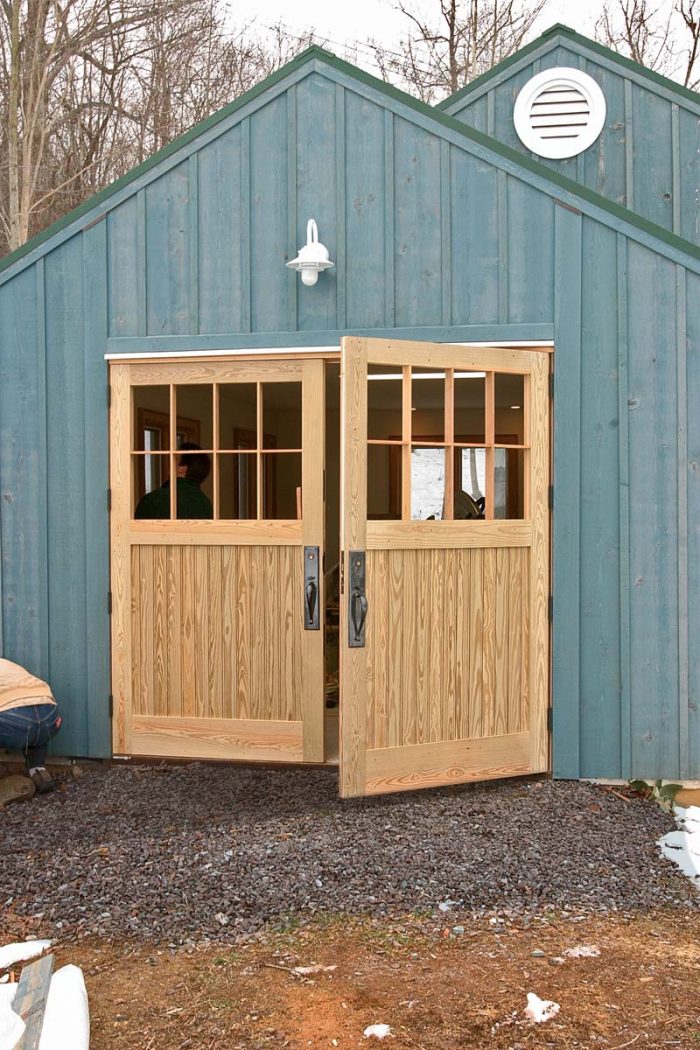 |
A perfect fit. The doors were made 1⁄4 in. oversize, then planed to fit the opening. Four hinges support each door. |
For more photos, drawings, and details, click the View PDF button below to read the entire article:

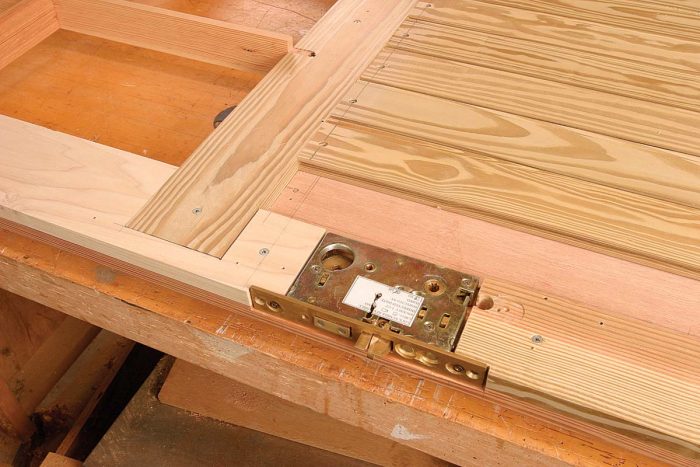
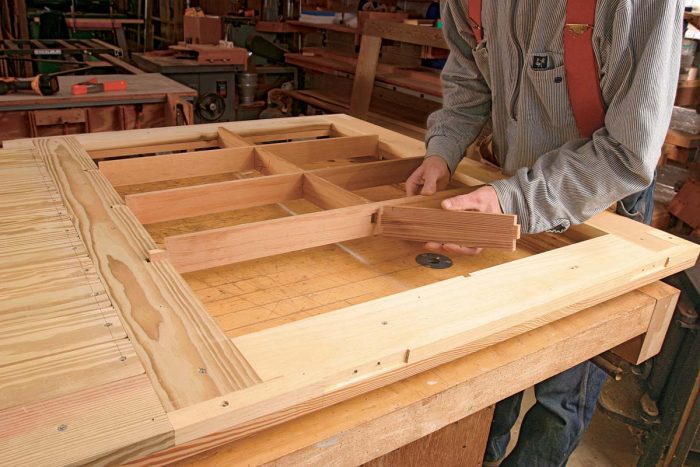
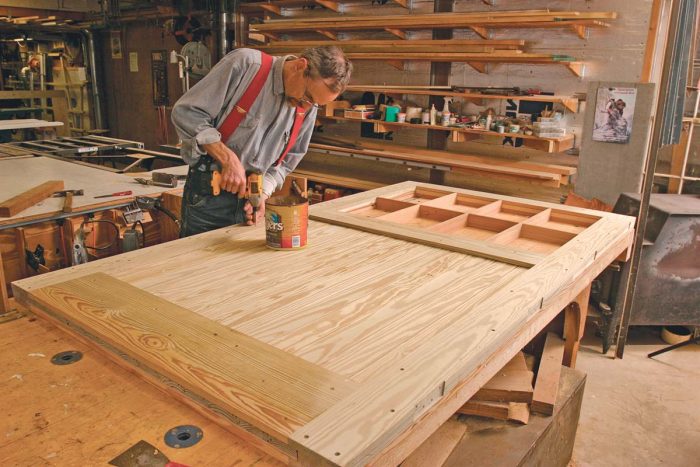





View Comments
Great that this method makes a good yet affordable door and I like that it uses mortise style locksets. But those are very expensive. Kind of negates the idea of saving some money by building your own door. Anyone know where to buy mortise locksets at an affordable price?
looks great, very helpful! What about insulation though? Would it be sufficiently rigid if I replaced the plywood on the inside with eps?